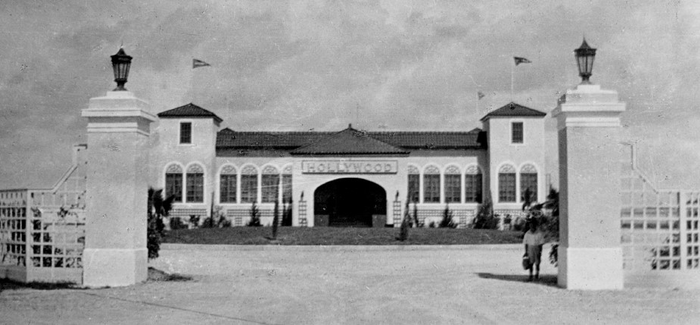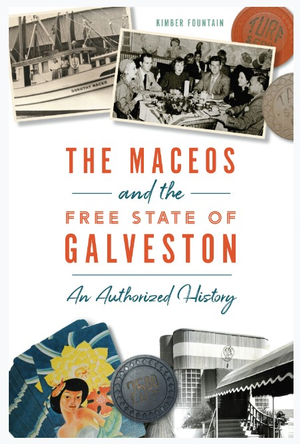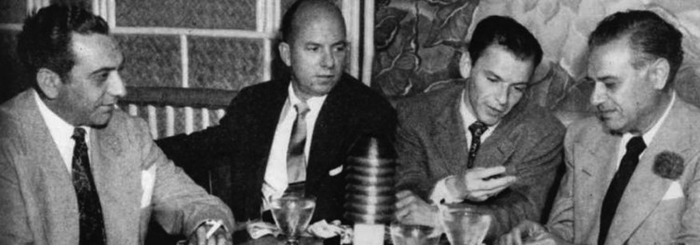Galveston author Kimber Fountain’s genuine love for the
island is as strong as the 10-mile long seawall that protects the city from
nature’s wrath. The Texas
Gulf Coast
native has expressed the bond she feels with the island and its storied past in
the pages of two books that pay homage to the area: Galveston Seawall
Chronicles (2017), and Galveston’s
Red Light District: A History of the Line (2018).
 This month, she celebrates the release of her
latest book, The Maceos and the Free State of Galveston, an authorized
biography of the Maceo family and its ties to the history of the island - far
beyond the underground gambling establishments and bootlegging and into the
family’s philanthropic and cultural legacy.
This month, she celebrates the release of her
latest book, The Maceos and the Free State of Galveston, an authorized
biography of the Maceo family and its ties to the history of the island - far
beyond the underground gambling establishments and bootlegging and into the
family’s philanthropic and cultural legacy.
The 187-page book, which examines the
family’s legacy in chronological fashion, includes interviews with prominent
members of the oh-so-fascinating family: Ronald Maceo, owner of Maceo Spice
& Imports - and the grandson of Frank Maceo, who was cousin to Salvatore
“Sam” and Rosario “Rose” Maceo, patriarchs of the Maceo empire; his children,
Concetta Maceo-Sims and Frank Maceo; Vic Maceo, son of Sam and Rose’s nephew
Vic A. “Gigolo” Maceo; Marlina Maceo, granddaughter of Dutch Voight, the former
leader of the Beach Gang whose daughter Estelle married a Maceo; and a longtime family
friend Saralyn Richardson, a fellow Galveston author.
While conducting research, Fountain poured
through historic archives and photos—some that have never before been
published, as well as photos of an anonymous collector’s vast collection of
Maceo memorabilia and ephemera from their clubs—to capture the essence of the
Maceos and the family’s landmark businesses.
Maceo Spice & Imports is renowned to
foodies for its muffulettas, similar to an Italian sub and amazingly delicious,
which can be traced back to R.S. Maceo who made and sold the now quintessential
New Orleans
sandwich from a wooden wagon in the city’s French Quarter. But the family's influence on Galveston consists of much more than cuisine
gastronomique and herbes et epices.
“The Maceos singlehandedly made art and
culture important in Galveston,
Fountain explains. "They were the sole creative impetus behind the
establishment of Galveston
as a purveyor of fine art and entertainment. Today, that is such a key piece of
our city’s identity and culture that it is hard to imagine Galveston without it."
 She continues, "Prior to the Maceos, we
were primarily a commercial center: Galveston’s
whole ‘world’ really centered on the international port. But then the Houston
Ship Channel opened in 1914, and Galveston
was forced to reevaluate its economic structure. This was helped along by the
seawall - even though it had been built merely as a protective measure, which
had slowly become the foundation for a new economy centered on entertainment.
In turn, this provided the perfect conditions for the Maceos, who were born
entertainers and visionaries, to use this newfound realization to catapult Galveston into an era of
prosperity.”
She continues, "Prior to the Maceos, we
were primarily a commercial center: Galveston’s
whole ‘world’ really centered on the international port. But then the Houston
Ship Channel opened in 1914, and Galveston
was forced to reevaluate its economic structure. This was helped along by the
seawall - even though it had been built merely as a protective measure, which
had slowly become the foundation for a new economy centered on entertainment.
In turn, this provided the perfect conditions for the Maceos, who were born
entertainers and visionaries, to use this newfound realization to catapult Galveston into an era of
prosperity.”
Q&A WITH KIMBER FOUNTAIN
Q: Why focus on the Maceo
family?
A: I have been utterly
fascinated with the history of the Maceo family for years and years, their
story was a large part of both of my first two books. From the outset, I
noticed two things about their family history - one, it was a magnificent story
full of pathos and triumph and devastation with an enduring legacy. Two, no one
was talking about it. There were no monuments or museums to the Free State of
Galveston, and this was prior to any singular, dedicated work on their family.
Even though Galveston’s
history is such an indelible aspect of our identity and economy, nearly the
entirety of our historical focus is on the 19th century, which is great, that
part was fascinating, too, but it is an incomplete tale of Galveston’s evolution and growth as a
community and a city.
But then I found out why no one was talking
about it - because it ended so badly. Galveston’s
vice economy was misinterpreted and misunderstood by the masses, and therefore
the city was literally made a national embarrassment in the 1950s many times
over. And then after the raids of 1957, there was no overcoming it anymore.
Because of this, the Maceo history was brushed
under the rug, not because of how the people of Galveston
viewed it - not one old-timer or BOI (Born on the Island)
has ever said one negative word to me about the Maceos but only ever sung their
praises - but because of the way it was viewed by mainlanders.
Let’s not look at their history through a
jaded lens that distorts the truth and the beauty of what the Maceo family
accomplished here in Galveston.
Let’s flip this on its head - just like I did with the Red Light District
history - and look at this with the ever-helpful 20/20 hindsight.
 Q: Tell me about the
research for the book.
Q: Tell me about the
research for the book.
A: That is like finishing a
jigsaw puzzle and then trying to list the exact order in which you laid all the
pieces. I know these things - I was able to dismantle nearly every stereotype
and negative assumption ever made about the Maceos, and I uncovered deeper,
truer, more intricate versions of the stories that we have merely been batting
around for decades.
At the same time, I was able to trace
precisely why those stereotypes emerged by reconstructing the Maceos’ actual
relationship with the American Mafia - emphasis on relationship with,
not membership in the Mafia; there is a big difference. I was able to
construct the full Maceo family tree in a way that no historian, nor even
living family members, had ever done.
What I do not know is exactly how I
did it. My bibliography is eight pages long. I simply pulled every last morsel
of information I could find about every major player in their story, I read
dozens of books and hundreds of articles, cataloging all of the information as
I went.
And then just like doing that jigsaw puzzle -
you do the edges first, then you find the pieces that look similar, and just
start piecing them together until you have a picture. The only difference was,
I had absolutely no idea what the picture looked like until it was finished.
Q: How did the book come
about?
A: I met Concetta Maceo
years ago when she first moved back to Galveston,
and I had written several pieces on their shop over the years. I was a huge fan
of her vast entrepreneurial talents, and she was a huge fan of my writing,
although she wasn’t really aware of the strong opinions I held about her family
history.
A couple of nights before the release party
for “Galveston’s Red Light District: A History of The Line,” which I chose to
host at Maceo Spice & Import Company, Concetta sent me a text, saying that
her dad (Ronnie) wanted to know if I had said anything negative about the
Maceos in my Red Light book.
I said girl, let me just tell you (laugh).
Not only do I not say anything bad about your family…and then I proceeded to
give her the shortened version of how I discovered that the Maceo family had
carried Galveston
through The Great Depression and World War II, and how they brought a level of
prosperity, fame, and glamour to the island that has never been duplicated.
She said that her dad had tears in his eyes
when she finished reading him that text message. The party went off splendidly,
and a couple of days later when I went in to pay the bill, she told me that she
wanted me to write an authorized history of their family.
I was calm on the outside, but inside I was
all aflutter. I knew that this was my story to tell, and to be asked by her and
Ronnie to write it, was the perfect conclusion to this long love affair that I
had been nurturing with this history. Of course, that was only the beginning.
Q: Without giving too much
away, what role did the Maceo family have in making Galveston what it is today?
 A: An often-overlooked
aspect of their history and legacy was the dismantling of the “Big Three.”
Before the Maceos, three families pretty much controlled the city and its
entire economy. These families were inherently and vehemently territorial, and
their refusal to allow “outsiders” into the commercial district was one of the
biggest factors in Galveston losing sway to Houston.
A: An often-overlooked
aspect of their history and legacy was the dismantling of the “Big Three.”
Before the Maceos, three families pretty much controlled the city and its
entire economy. These families were inherently and vehemently territorial, and
their refusal to allow “outsiders” into the commercial district was one of the
biggest factors in Galveston losing sway to Houston.
But all of that changed when the Maceo empire
took over. Not only were they revolutionary in their vision to make Galveston a nationally
known upscale resort destination, unlike the Big Three, they shared in their
prosperity.
The Maceos are often seen as the singular
perpetuators of gambling on the island, but there were nearly fifty gambling
houses in Galveston during the Free State era and only a handful of them
were Maceo enterprises. Most importantly, the economic boon they initiated - coupled
with a ‘live and let live’ policy towards other business owners - transformed Galveston into what it is
today: a small business utopia where creative minds come to realize their
visions and dreams.
Q: While conducting
research and interviews, what surprised you about the Maceo legacy?
A: Nothing. The Maceos
merely proved to me that they were the incredible people that I had thought they
were all along.
Q: Why did you choose the
format?
A: The book is more or less
chronological, although several chapters are inserted throughout that
illuminate certain specific aspects of the history in surrounding chapters. The
goal of this book was not just to tell the story; it was to ferret out the
truth of what exactly was happening and why it was happening. This not just
research; it was investigative research.
A lot of what is told, or assumed, about the
Maceo family has been incredibly distorted over time and is entirely
inaccurate. But that is the story that people know, and I did not want people
reading it saying, ‘Well, that’s not what I heard.’ Or ‘That’s not right.’
So I had to address those stories directly,
tell the reader what they thought they knew in order to demonstrate that I was
fully aware of the current narrative, before I could set out telling the truth,
which was often the exact opposite of the story we have been telling for so
many years.
Q: If you could use one
word to describe the Maceo family, what would it be?
A: Magnificent. Now I wish
I had titled the book that - The Magnificent Maceos.
Q: What is the legacy of
the Maceo family?
A: The crux of Galveston’s cultural
identity is comprised of four primary facets - small business, history, the
arts, and our ecosystem. The Maceo family is predominantly responsible for Galveston’s full
realization of three out of these four pillars.
Q: You're a prolific
writer. What's next for Kimber Fountain, and when will we see it?
A: Even though I said this
after both of my other books, I think this is probably it for me on the history
front. Honestly, looking back, this is the story I wanted to tell all along,
and my first two books were merely the path to manifesting it.
I am blessed that my curiosity and ambition
are unlimited, and I have several other genres and mediums that I would like to
pursue. I am toying now with producing a work of philosophy. However, my
dearest love is threefold - acting, directing, and screenwriting, and thereby
my ultimate pursuit is to be a filmmaker.
Q: To whom is the book
dedicated?
A: My fiancé, Eric Trevino,
because it absolutely would not have happened without him. I think all great
couples have not just big things in common but lots of little things. One of
our ‘little things’ is a fascination with gangster and Mafia history. I grew up
going to all the mob movies and shoot-’em-ups with my dad, and when I moved to Chicago after college, it
didn’t faze me one bit that my first condo was literally right next door to the
location of the St. Valentine’s Day Massacre.
Eric, on the other hand, has literally
hundreds of books on the topic. He helped me unravel the Maceo connections to
the American Mafia and find out how Galveston
played into that relationship, which ultimately helped me prove that the Maceos
were not members of the American Mafia and that they actually worked to keep
them out of Galveston.
Q: What would you like
people to know about your work?
A: People may look at my
subject matters and think that I have a penchant for the sensational or tawdry,
but then they will be very surprised when they actually read my work. Through
diligent research and meticulous fact-finding missions, I was able not only to
speculate, but to prove that our knee-jerk response to these aspects of history
deserves further examination.
The funny thing is, it is the sensationalism
of these subjects that I seek to dismantle. And the best part is, the true
story is even more riveting than the sensationalized version. Our inability to
fully process the meaning of these histories has outright denied the Maceo
family of their well-deserved legacy.
Q: Any final thoughts?
A: Since first learning of
the Maceo family history and even today, I cringe when I hear the Maceos
referred to as “mobsters” or “gangsters” or “mafia.” I know why that has
happened - it is because we have unknowingly been regurgitating this same
generic Maceo storyline for over fifty years, and often it is easier for
historians to simply repeat what has already been said than to put the work in
and find out the truth.
Well, one thing I definitely did was put that
work in with this book, I took a seriously deep dive on this one, but it was
worth it. I was able to unequivocally prove my long-held theory that the Maceos
do not deserve these labels. I was able to present this story free of
stereotypes and suppositions and demonstrate that the truth is far more
fascinating than fiction.
The Maceos and The Free State of Galveston:
An Authorized History
From Arcadia Publishing ~ The History Press
$23.99 paperback, $12.99
E-book
Online at
www.ArcadiaPublishing.com
In Store at booksellers
throughout Galveston and Houston
E-book at www.Amazon.com
Meet Author Kimber Fountain
and get a personalized signed copy of the book:
Maceo Book Release Party
February 8, 6-9pm
Maceo Spice & Import Company, 2706 Market St.
The Original Red Light District Tours of Galveston, led by Kimber
Fountain
Every Wednesday-Saturday at 5pm (7pm May-September)
Reservations Required
(Books available for sale at conclusion of
tour.)
www.RLDTG.com
For more information, off-island appearances, and events as they
are added, follow Kimber Fountain on Facebook.com/AuthorKimberFountain. For
speaking engagement inquiries, contact Kimber directly at
Kimber.Fountain@gmail.com.